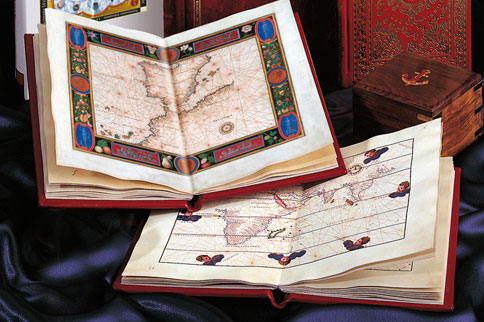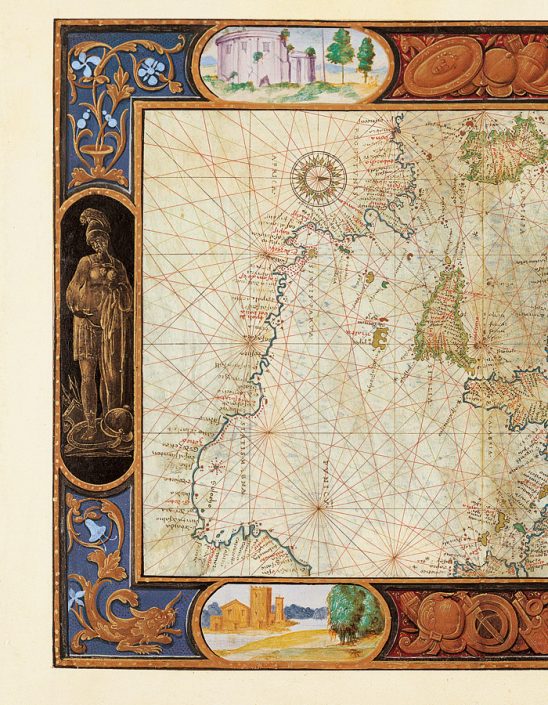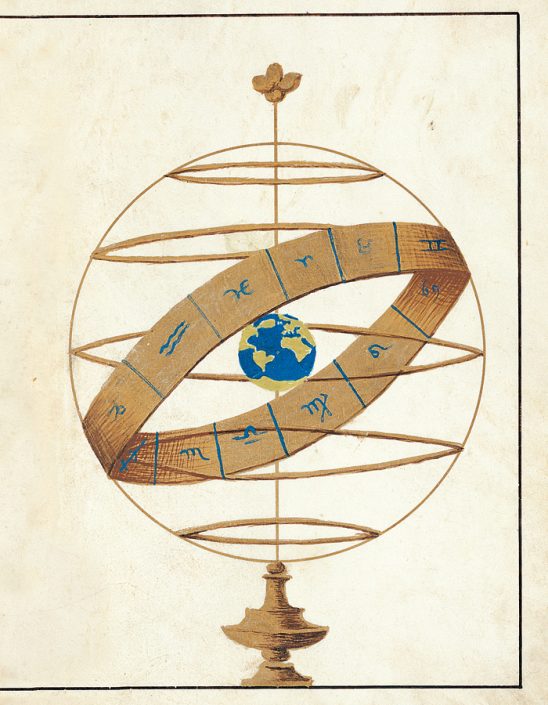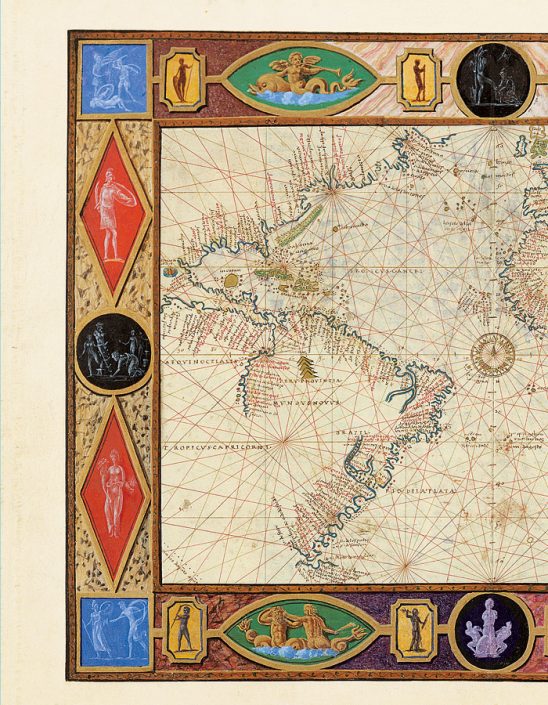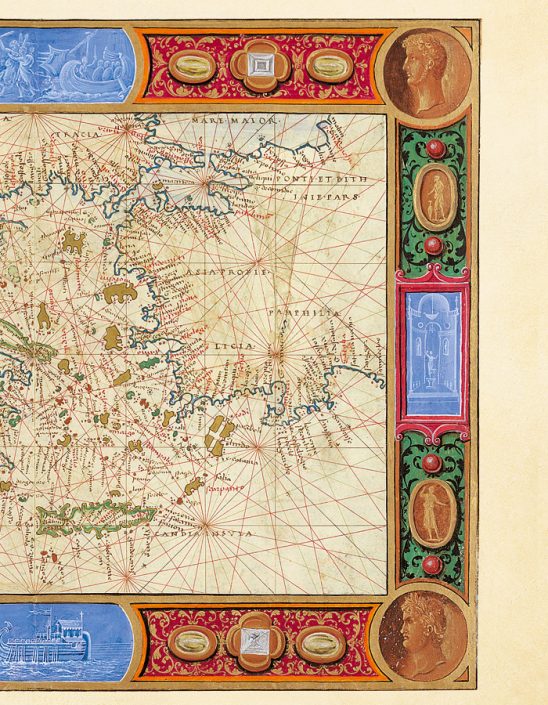Set of Atlases: the Charles V and Magellan Atlases
Current owner:
© The John Carter Brown Library, Providence, U.S.A. and the Biblioteca Nacional, Madrid. 16th century.
Format:
22 x 15 and 20 x 14 cm.
Illustrations:
68 miniatures illuminated in gold and silver.
Extent:
32 and 36 parchment pages.
• This set consists of two codices by Batista Agnese of Genoa, the prestigious and prolific 16th-century cartographer who produced most of his works commissioned by the royal houses of Europe.
• His work is characterized by the sumptuousness of the colours used in the harbour charts and the planisphere indicating the route that Magellan and his second-in- command Elcano followed on the voyage in which the globe was circumnavigated for the first time in history, an enterprise financed by the Emperor Charles V, and the double-page illustrations of the armillary sphere and the Zodiac, and the lavish use of gold leaf in the illustrations on its small folio pages.
• Unique edition of 999 numbered copies with notarized certificate of authenticity.
The Charles V Atlas. Royal House of Hapsburg. Sixteenth Century.
• Manuscript in the John Carter Brown Library, Providence, U.S.A.
• 32 parchment pages illuminated in gold and extravagantly decorated with Renaissance motifs by Giulio Clovio, known to his contemporaries as the Michelangelo of illuminated manuscripts. Among his best known works are the Triumphs of Charles V and the Farnese Book of Hours.
• Commissioned by the Emperor Charles V, this book was used in the geography lessons given to the crown prince, the future King Philip II of Spain, and presented as a permanent gift to the heir to the throne on the occasion of his 16th birthday.
• Format: 22 x 15 cm.
• Gilt tooled leather binding.
The Magellan Atlas. Royal House of Bourbon. Sixteenth century.
• Manuscript in the National Library of Spain, Ms. Res. 176.
• 36 parchment pages illuminated in gold and highlighted by cartographic illustrations.
• Format: 20 x 14 cm.
• Bound in gilt tooled red leather over boards.
The first round the world voyage. The Voyage of Magellan, financed by Charles V:
I. Ferdinand de Magellan and Juan Sebastián de Elcano set sail from Seville on 20 September 1519.
II. Storms force a delay of several weeks.
III. They weigh anchor again and set off in search of a southern passage.
IV. They transverse the body of water now known as the Strait of Magellan.
V. Magellan dies in the Philippines. Elcano takes command and sets out on the homeward voyage, his ships laden with precious spices.
VI. Elcano goes round the Cape of Good Hope. VII. Returns to Seville on 6 September 1522.
Patrimonio Ediciones
The only company which uses pure gold and true precious stones for its facsimiles of the most beautiful manuscripts in the world
Address
C/Martín el Humano,12.
46008 Valencia
Phone (+34) 963 82 18 34
info@patrimonioediciones.com
Legal
Schedule
Monday to Friday: 9:00-14:00 / 16:00-18:00
Saturday: Closed
Sunday: Closed


